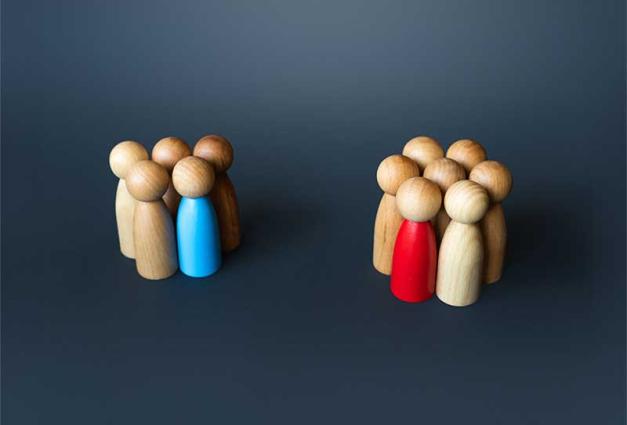Kids love to help. Indeed, they will go out of their way to do so, even when their earnest efforts are inefficient or ineffective. Imagine the child who tries to help clean up, who just makes an even bigger mess in the process. But how and when infants help is less understood. Our research considered different ways that kids help, the situations in which helping occurs, and how such behaviors vary with age.
While helping is always about meeting the needs of another person, how and when helping happens can vary.
When researchers write about infant and child helping, they (perhaps inevitably) produce a jumble of terms and ways to define helping. What one researcher terms “helping,” another might label “problem solving,” “sharing,” or “distraction.” So for our research, we created order by grouping the studies into three types:
- Meeting the concrete need of another person, such as picking up a pen that they have dropped—this is called instrumental helping.
- Comforting, as in providing a hug or tender affection to make someone feel better.
- Indirect helping, which happens when there may be nothing that one can do directly, but one can help indirectly by soliciting others to remedy the situation.
We were also curious if infants would help in a variety of emotional contexts. Researchers have typically observed how infants help people who are sad or distressed. However, helping can also occur in response to other emotions. For example, I may try shoo away a spider if it is scaring you (instrumental helping), console you when you are irritated (comforting), or inform the waiter that you would prefer a different dish to eat (indirect helping).
How We Looked at These Questions
Our research therefore looked at the three forms of helping and the emotional contexts infants were in when they helped. Infants aged 16-, 19-, and 24-months interacted with an adult who expressed either joy, sadness, fear, anger, or disgust toward a toy. We then observed how infants responded toward the emotional adult and noted their different forms of helping. Our analyses compared the rates of each type of infant helping across age groups and emotional contexts.
Importantly, we classified the infant behaviors by their function (what the infant was attempting to accomplish) rather than their form (that is, a specific behavior to complete that goal). This unique approach provided flexibility in the type of behavior that an infant could use (such as hugging, patting on the back, soothing words) to achieve a particular type of helping goal (for example, comforting).
The infants showed us quite a repertoire of different kinds of helping, and these were attuned to the particular needs of the emotional adult. For example, instrumental helping (34%) was more common when the adult was sad than when she expressed other emotions (ranging from 19% to 2%). And, as you might expect, the repertoire became more advanced in the older infants. The 24-month-old infants were more likely to provide help (33%) than the 19-month-olds (20%) and 16-month-olds (15%). The 19- and 24-month-old infants were also more likely to offer indirect helping than the younger age group, typically by attempting to solicit the parent to help the emotional adult.
Additionally, and somewhat surprisingly, 35% of the oldest infants helped even when the adult was expressing joy. This may indicate that these infants were engaging in a play-based script of providing help. Practicing how to help in playful settings may be one way that infants practice and fine-tune their helping behaviors.
Helping others is crucial for being a social partner and for developing social relationships. Our study showcases the variety of ways that infants help, when they use various helping strategies, and how these behaviors change as they develop.
So, the next time that you offer help to another person, think about how and why you are doing so. You may just find that your helping behavior is as complex and nuanced as a 2-year-old’s.
For Further Reading
Padilla-Walker, L. M., & Carlo, G. (2014). The study of prosocial behavior: Past, present, and future. In L. M. Padilla-Walker & G. Carlo (Eds.), Prosocial development: A multidimensional approach (pp. 3–16). New York, NY: Oxford University Press. https://doi.org/10.1093/acprof:oso/9780199964772.003.0001
Paulus, M. (2018). The multidimensional nature of early prosocial behavior: A motivational perspective. Current Opinion in Psychology, 20, 111–116. https://doi.org/10.1016/j.copsyc.2017.09.003
Walle, E. A., Reschke, P. J., Main, A., & Shannon, R. M. (2020). The effect of emotional communication on infants' distinct prosocial behaviors. Social Development, 29(4), 1092-1114.
Eric Walle is Associate Professor of Psychological Sciences at the University of California, Merced. He is the Director of the Interpersonal Development Lab and Co-editor of the forthcoming Oxford Handbook of Emotional Development.




